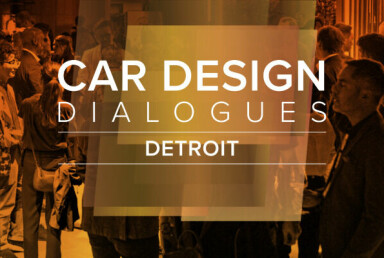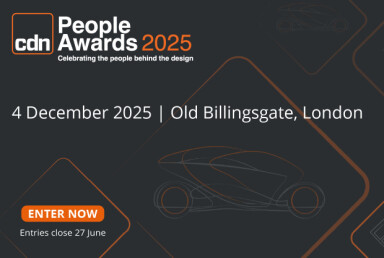Concept car design
First sight: Peugeot Polygon concept

Equipped with the Hypersquare steering wheel that will enter production in 2027, the Polygon concept introduces the future of design at Peugeot
Peugeot didn’t unveil the Polygon concept so much as stage-manage its arrival. In a small, darkened room, the car sat motionless beneath a taut black sheet, its outline barely legible under pulsing audio that felt akin to being in a nightclub. As the music crescendoed, light began to seep through the fabric – faint, then rhythmical – hinting at the Micro-LED choreography beneath.
When the sheet was drawn back, the Polygon’s lighting signature flickered to life in a syncopated sequence that seemed to dance across the reimagined horizontal three-claw lighting signature. This introduction was designed to communicate intent – Peugeot’s future is set in digital expression.
Car Design News took a closer look at the concept, with comments from Peugeot’s head of advanced exterior design Sebastien Criquet.
Exterior design – geometric minimalism
Micro-LED technology defines the Polygon’s face, reimagining Peugeot’s familiar three-claw lighting signature. Here, the claws are stretched horizontally, built from a series of Micro-LEDs that animate in coordinated patterns when the car is stationary.

The front and rear signatures synchronise, bringing a satisfying amount of motion to the vehicle’s static form. “We have created a new front face identity for the Peugeot brand,” explains Criquet. “This displays the future of our face identity with those three horizontal lights.”
A small Micro-LED screen sits on the C-pillar next to the pop-up charging connector. This display offers a straightforward function – showing the charge level from outside the car.
The broader exterior follows a theme of pure, geometric volumes. Polygon’s stance remains unmistakably feline, but with fewer character lines and more emphasis on sculpted simplicity. Colour accents appear across the body panels, wheels, seat foam and even the Goodyear tyres – made possible through laser-engraving technology.
Criquet commented on the exterior proportions: “This concept is a very compact car at just under four meters. But we wanted to create more space and to do so, we have pushed the windscreen forward.”
This pushed-forward windscreen combined with the removal of the B-pillar creates a broad, uninterrupted glass expanse that visually enlarges the cabin. It’s effective as a concept, though perhaps difficult to achieve in production.
Peugeot emphasises reduced part count throughout the vehicle, aiming for less weight, easier assembly and simpler end-of-life disassembly. The use of two oversized butterfly doors instead of a traditional four-door layout further supports this ambition, even if it remains largely conceptual in practicality.
It’s a reminder that the Polygon concept is as much a manifesto as a model, something Criquet distilled neatly: “It's a real concept car where we want to express the agility of Peugeot, also the fun – it's time to shape the future of driving pleasure.”
Interior design – modular and customisable
Peugeot’s evolved Hypersquare steering wheel is the centrepiece of the concept and the element most likely to reach customers, with Peugeot stating this will see production from 2027.
Compared with the previous iteration, seen on the Inception concept, this version feels more considered and production minded. Its rectangular form and four circular corner pods act as the primary interaction points, allowing drivers to keep their hands on the wheel while accessing key controls.

The entire system operates through steer-by-wire, replacing the mechanical linkage with electronics – a technology Peugeot says will also debut on a production vehicle in 2027 – whether that vehicle resembles the Polygon remains unclear.
The Hypersquare can also be personalised through different materials and colours, cementing Peugeot’s intention to treat it as a future brand signature rather than a passing concept flourish.
Polygon also debuts a fresh take on the i-Cockpit, getting rid of the dashboard-mounted display. Instead, the windscreen itself becomes the infotainment interface, with a Micro-LED panel behind the steering wheel projecting information onto a 24cm by 74cm area – roughly equivalent to a 31-inch screen. When the car is stationary, the Micro-LEDs become visible from outside, linking interior and exterior through shared animations. The interior and exterior lighting colour can be selected using a rotary dial.
Peugeot offers a modular approach to personal items: holders for phones, caps, bags and even skateboards. It’s fun and reminiscent of the Dacia Hipster’s interior.
The seating is a promising example of experimentation. Criquet said: “We have decided to introduce new thinking about car design is to reduce the number of parts. And to do so we have created a seat with less parts.” Peugeot combines a 3D-printed R-PET shell, developed with Spanish firm Nagami, with single-piece moulded foam from Belgian specialist Sixinch. The foam itself is coated in a tinted protective layer that can be swapped out for a different colour or a more enveloping silhouette, illustrating how modular interiors could evolve. The result is a visually clean, geometric structure that reduces parts and therefore boosts sustainability credentials.
Sustainability has also been considered through the interior paint, as the lacquer contains components recycled from end-of-life tyres.
Driving introduces three visual modes – cruise, fun and hyper – that synchronise animations both inside and out. Immersive, yes, but potentially visually busy for a production car. The underlying idea, however, of extending the i-Cockpit into a full-vehicle ecosystem is intriguing.
And intriguing is a good word to summarise this concept, acting as a signal that Peugeot is willing to experiment boldly. With a few elements already promised for production, we will be watching in anticipation.













